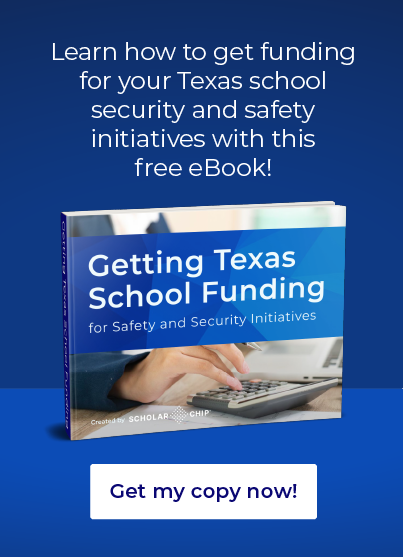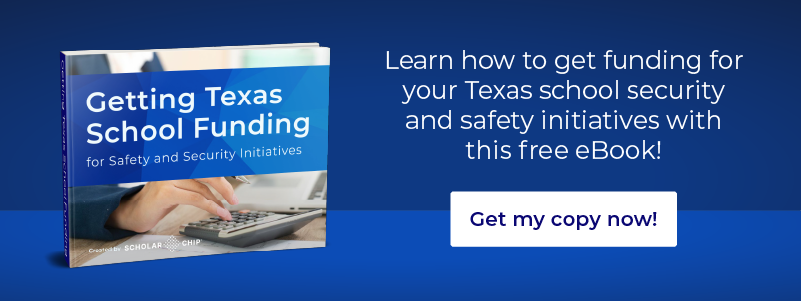In 2019, seventeen bills focused on school safety in Texas were introduced and passed into law by the Texas legislature. While the laws were a direct reaction to the 2018 school shooting in Santa Fe, Texas, the reality became quickly apparent to lawmakers: Texas public school safety was long overdue for attention. Studies from 2018 show that the state—one of the largest and most populous in the nation—ranked seventh in violent threats and fourth in incidents.
While the Texas legislature set aside $100 million for physical safety improvements, like bulletproof glass and metal detectors, these measures only address a small number of incidents. Many hardening strategies are intended to stop an attack in progress, not address the problems that can lead to incidents.
Several of the bills that the lawmakers approved did bring attention to the need for proactive strategies like mental health programs. But a great deal of the initial funding was focused on reactive measures. The good news for Texas schools, however, is that it’s possible to find funding for preventative initiatives from other sources. These allow schools to address a broader set of strategies that improve school climate and alleviate safety concerns.
Federal Government and Private Corporation Grants
Government funding for school safety in Texas initiatives doesn’t need to end at the Texas state line. There are federal government grants and funding opportunities available for school safety programs. Additionally, a number of large corporations have made funds available to support safety initiatives in the communities where they operate.
Federal programs can come from several departments and sources. For instance, some grants are specifically geared at school safety, like the STOP School Violence Grant Program. Run by the Bureau of Justice Assistance in the Department of Justice, it offers grants to cover a variety of security and safety measures, from readiness assessment and intervention training to technology solutions for reporting threats.
In addition to federal funds, schools can apply for grants from major corporations. Companies from Walmart to Motorola offer funding for local schools in the areas where they do business. Walmart’s grants, for example, are targeted to meet the unique needs of the communities where they have retail locations. Motorola, on the other hand, uses its grants to shore up communications and systems for school safety.
Funding for Education and Prevention of Substance Abuse
Many school safety funding opportunities are for protection during an incident or for support following one. But there is also funding to address issues that have been shown to be closely related to increases in school violence and crime. One such issue with a clear tie to these security concerns—and a proven precursor to them—is substance abuse.
Schools in Texas should pay special attention to leveraging substance abuse funding for school safety programs and climate change initiatives. During the 2018-2019 school year, Texas recorded more than 25,000 incidents related to controlled substances, and more than 3,000 incidents related to alcohol violations.
Along with the new Texas laws, there were funds earmarked for mental health assistance and education, including substance abuse. In addition, there are numerous local and federal drug and violence prevention grant programs available that Texas schools can take advantage of.
Funding for Positive Supports and Programs
Addressing substance abuse issues is a step in the right direction in taking a broader and more proactive look at school safety in Texas. But even beyond that, there is evidence that points to a supportive and positive school environment’s impact on reducing violence and delinquency.
The use of Positive Behavior Intervention and Support (PBIS) frameworks and Restorative Discipline Practices (RDP) are encouraged in Texas schools today. The Texas Education Agency (TEA) offers funding for both PBIS and RDP initiatives. These two approaches work toward establishing social engagement, meaningful accountability, acceptance, and the use of positive behavior interventions to support students and encourage student achievement.
For these programs to be effective, however, administrators and educators need to be able to identify and manage intervention support for students without adding additional burden to their schedules and responsibilities. Keeping accurate tracking and reporting allows schools to intervene early for at-risk students and track the progress of PBIS and RDP programs.
Safety funding in Texas schools shouldn’t be focused solely on physical barriers and campus hardening. While it remains to be seen how much funding will come from the state’s lawmakers in the future for preventative programs, funding is available for initiatives that are tangential to school violence, such as substance abuse issues. These programs consequently reduce violence in schools. Going beyond that, schools should use appropriately allocated funding from the state and other sources to create a positive environment that encourages academic performance and behavioral support, like PBIS and RDP. These proven programs reduce overall threats and incidents and provide the added benefit of better academic and long-term student outcomes.
ScholarChip offers a solution called Alternative Behavior Educator (ABE). This innovative program enables school administrators and counselors to identify, monitor, and improve student behavior throughout a student’s career, while giving them powerful data-driven reports that quickly flag at-risk students, help monitor and chronicle progress, and help them identify school safety risks before incidents.
To learn how ScholarChip can help make Texas schools safer or get free recommendations, feel free to contact us for a free consultation!


